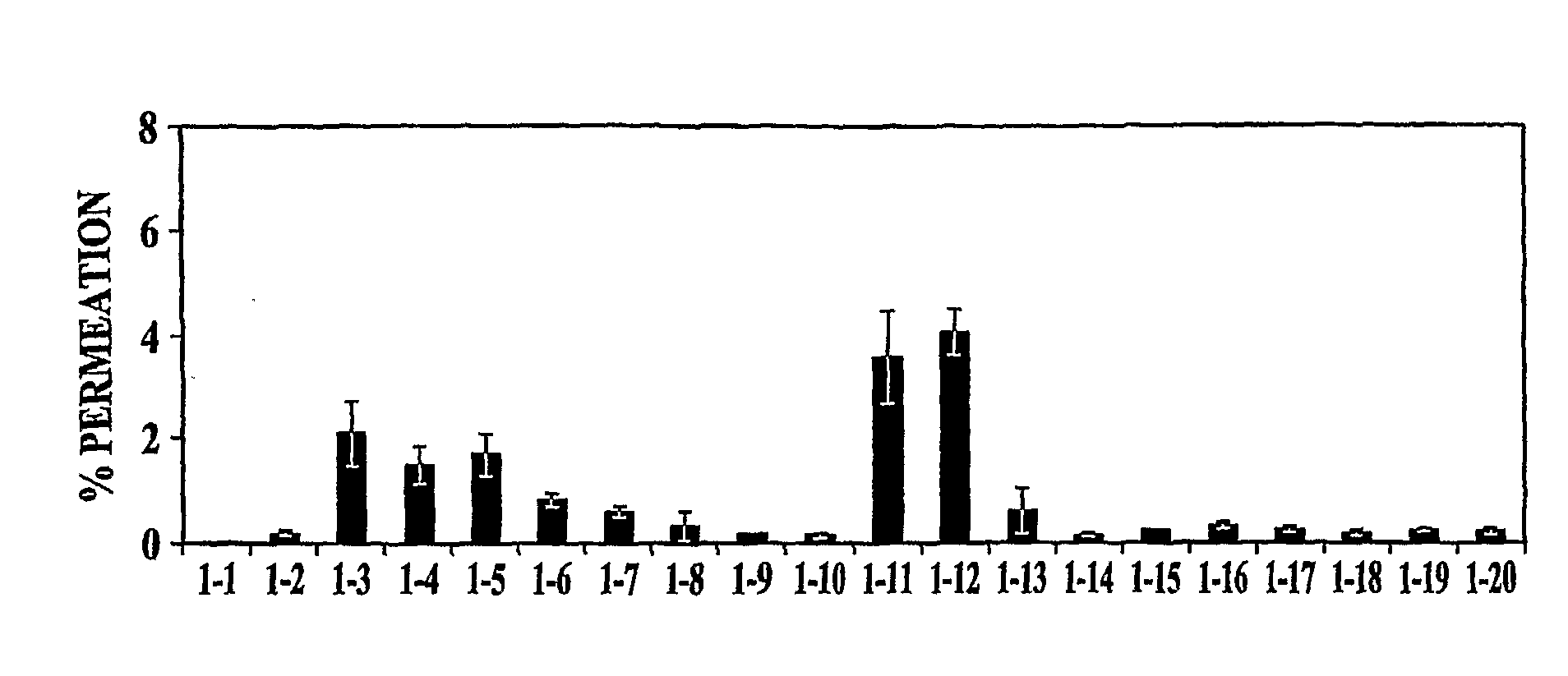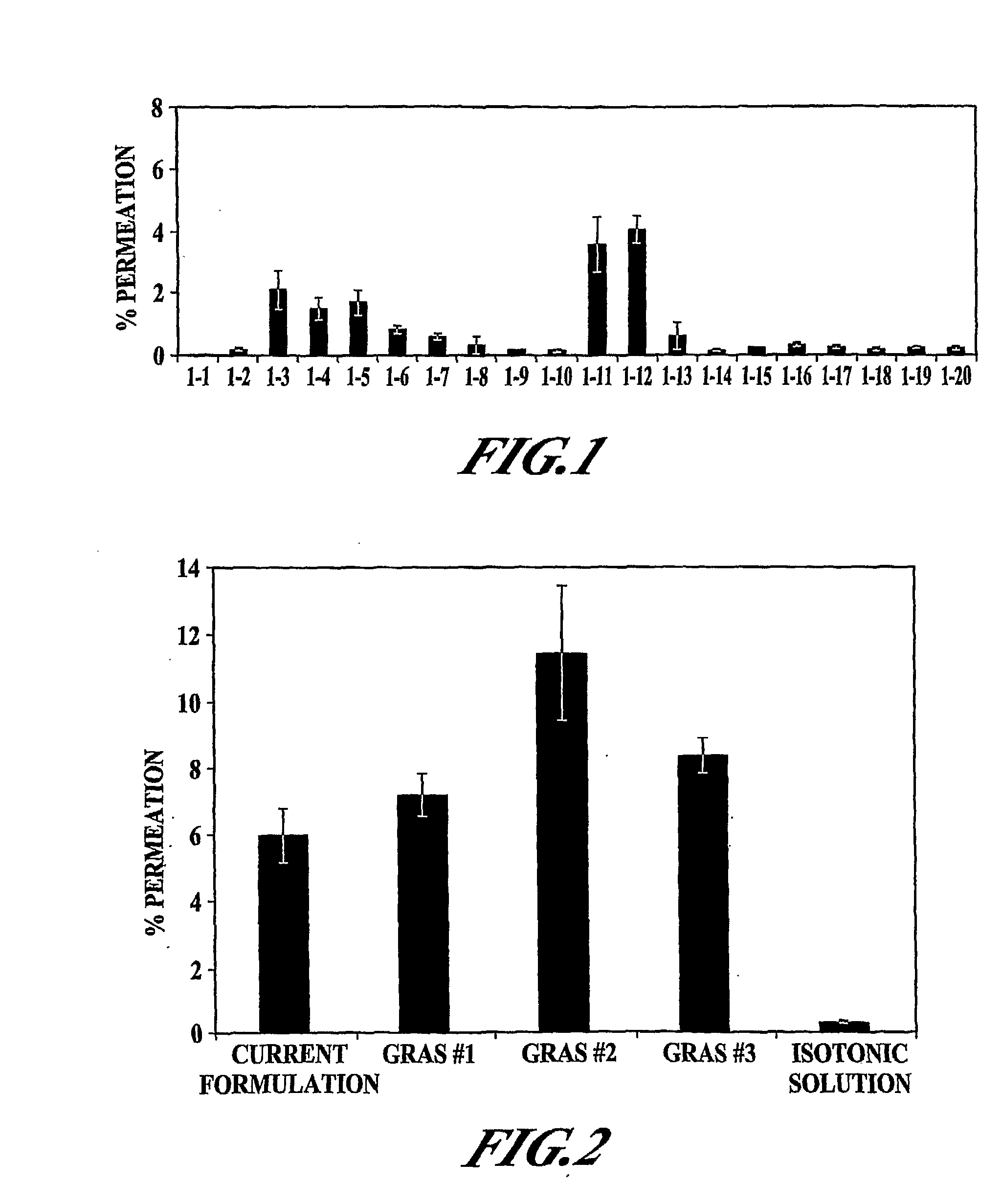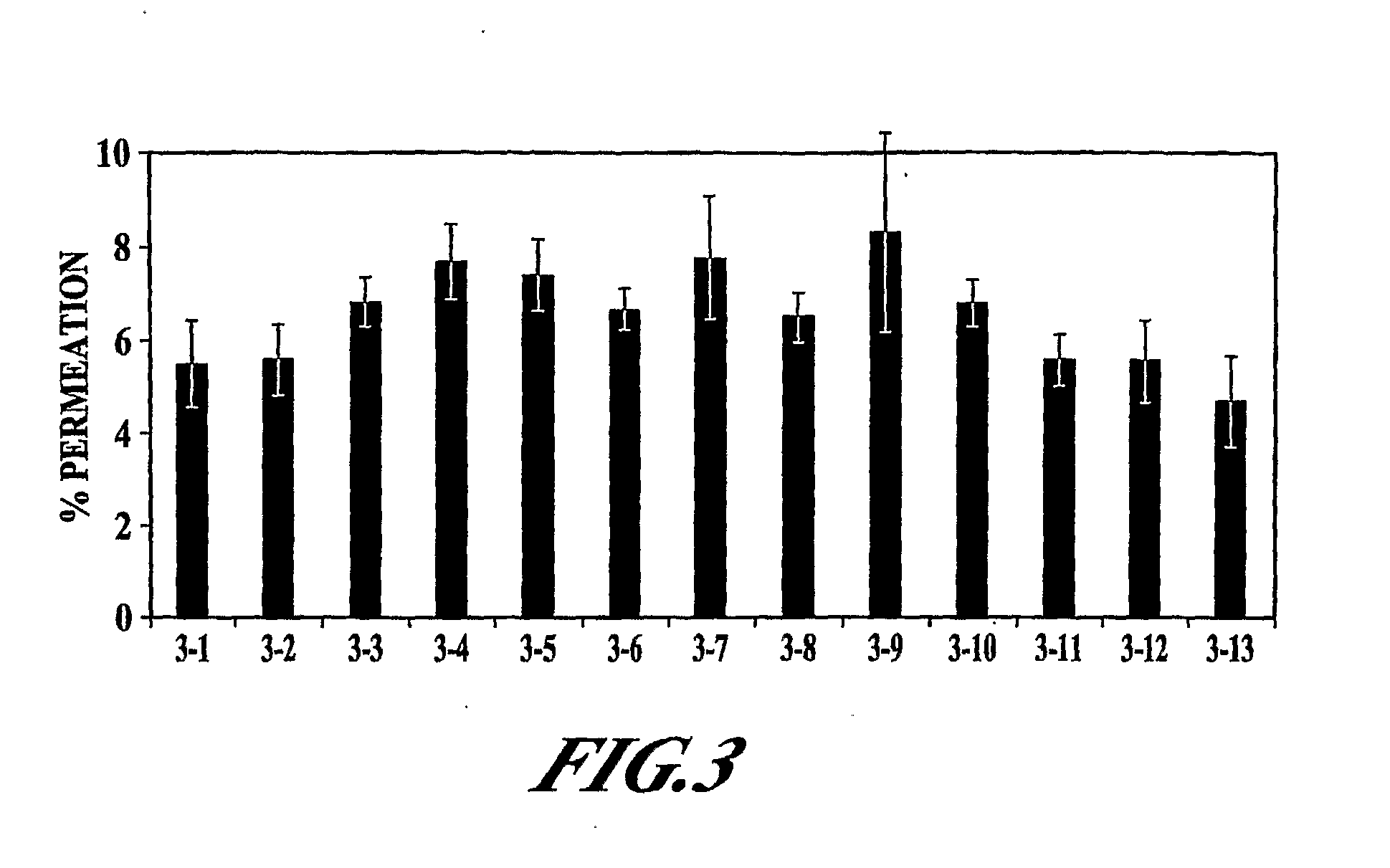Formulations for enhanced mucosal delivery of pyy
a technology of mucosal delivery and pyy, which is applied in the direction of drug compositions, peptide/protein ingredients, metabolic disorders, etc., can solve the problems of limited administration mode, no effective formulation optimization, and high risk of obesity and its associated disorders
- Summary
- Abstract
- Description
- Claims
- Application Information
AI Technical Summary
Problems solved by technology
Method used
Image
Examples
example 1
In Vitro Tissue Model Evaluation of Various PYY3-36 Formulations
[0108]In vitro permeation of PYY3-36 in the presence of various excipients (EDTA, polysorbate 80 (Tween 80), oleic acid, sorbitol, and ethanol) was evaluated. The formulation was adjusted to pH 4 with 10 mM citrate buffer (citric acid / sodium citrate). Various formulations tested are presented in Table 1. All samples were clear and colorless.
TABLE 1Description of Formulations Tested in Example 1Conc. (%)SampleConc. (mg / ml)TweenOleicSorbitol#PYYEDTAEthanol80acid(mM)1200000(140 mM NaCl)22100019532100001354201000520200062000.1020072001020082001001709200100.117010200100.517011211000122102000132100.1019014210010010515210100.116516201100.10172100100.510518202100.5019211100.10202102100.5021Medium22Triton X
[0109]Samples were evaluated in an in vitro tissue model. The cell line used was normal, human-derived tracheal / bronchial epithelial cells (EpiAirway™ Tissue Model, MatTek Corporation). The cells were provided as inserts grown...
example 2
In Vitro Evaluation of Various PYY3-36 Formulations
[0123]The objective was to further examine the effect of ethanol, EDTA, and Tween 80 as permeation enhancers for PYY3-36. Formulations were adjusted to pH 4 with 10 mM citrate buffer (citric acid / sodium citrate). The various formulations tested in Example 2 are presented in Table 2. In addition to these samples, a negative isotonic control, a cell culture media control, and a Triton-X control were also included.
TABLE 2Description of Formulations Tested in Example 2FormulationDescriptionCurrent45 mg / mL MβCD, 1 mg / mL DDPC, 1 mg / mL EDTA,10 mM citrate buffer (pH 5.0), 25 mM lactose,100 mM sorbitol, 0.5% CBGRAS #11 mg / mL EDTA, 1% EtOH, 10 mM acetate buffer(pH 4.0), 0.02% BZKGRAS #210 mg / mL EDTA, 2% EtOH, 10 mM acetate buffer(pH 4.0), 0.02% BZKGRAS #310 mg / mL EDTA, 10 mM acetate buffer (pH 4.0),0.02% BZKSalineIsotonic saline
[0124]The various samples in Table 2 were examined for TER, MTT, LDH and PYY3-36 permeation; the methodologies for t...
example 3
In Vitro Tissue Model Evaluation of Various PYY3-36 Formulations
[0128]The objective of this study was to further examine the effect of ethanol, EDTA, and Tween 80 as potential permeation enhancers for PYY3-36.
[0129]The in vitro permeation of PYY3-36 in the presence of various excipients (EDTA, ethanol, Tween 80, DDPC, and methyl-beta-cyclodextrin) was evaluated. Formulations were adjusted to pH 4.2-4.3 with 10 mM citrate buffer (citric acid / sodium citrate). The various formulations tested are shown in Table 3. In addition to these samples, a negative isotonic control, a cell culture media control, and a Triton X control were also included. Sample 3-1 contained a combination of methyl-beta-cyclodextrin (M-β-CD), DDPC, and EDTA, in a combination shown previously to provide enhancement of PYY3-36 permeation (U.S. patent application Ser. No. 10 / 768,288 [Publication No. 20040209807]).
[0130]The various samples in Table 3 were examined for TER, MTT, LDH, and PYY3-36 permeation; the methodo...
PUM
| Property | Measurement | Unit |
|---|---|---|
| Temperature | aaaaa | aaaaa |
| Temperature | aaaaa | aaaaa |
| Fraction | aaaaa | aaaaa |
Abstract
Description
Claims
Application Information
 Login to View More
Login to View More - R&D
- Intellectual Property
- Life Sciences
- Materials
- Tech Scout
- Unparalleled Data Quality
- Higher Quality Content
- 60% Fewer Hallucinations
Browse by: Latest US Patents, China's latest patents, Technical Efficacy Thesaurus, Application Domain, Technology Topic, Popular Technical Reports.
© 2025 PatSnap. All rights reserved.Legal|Privacy policy|Modern Slavery Act Transparency Statement|Sitemap|About US| Contact US: help@patsnap.com



